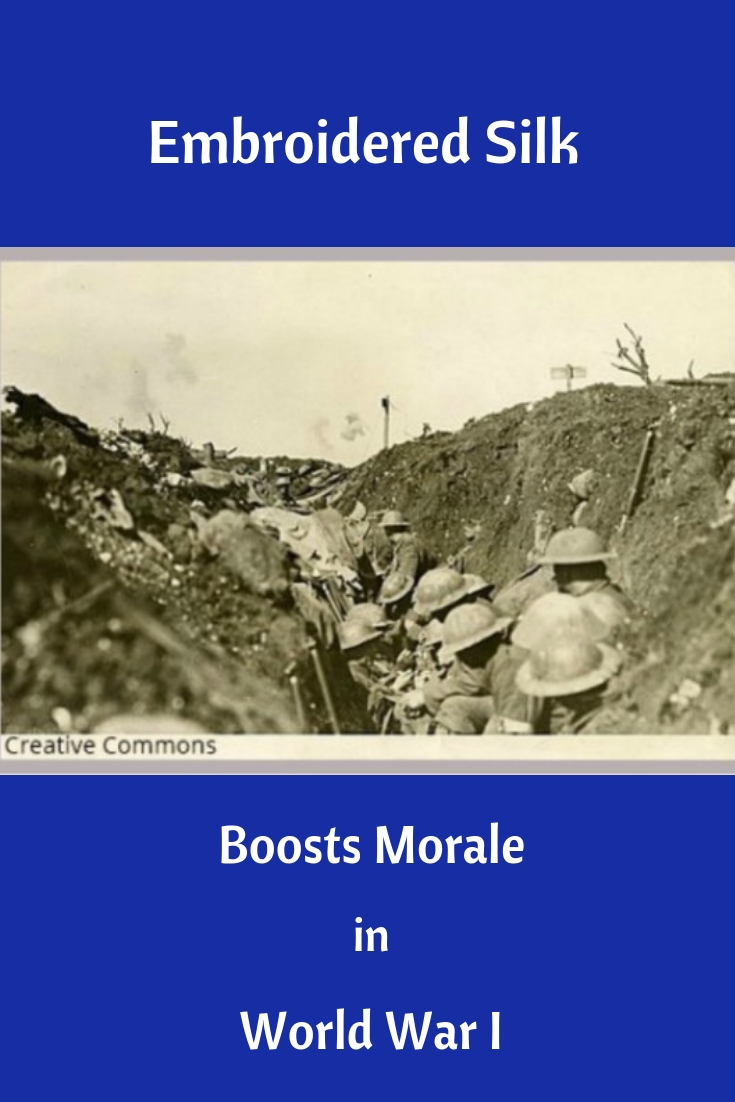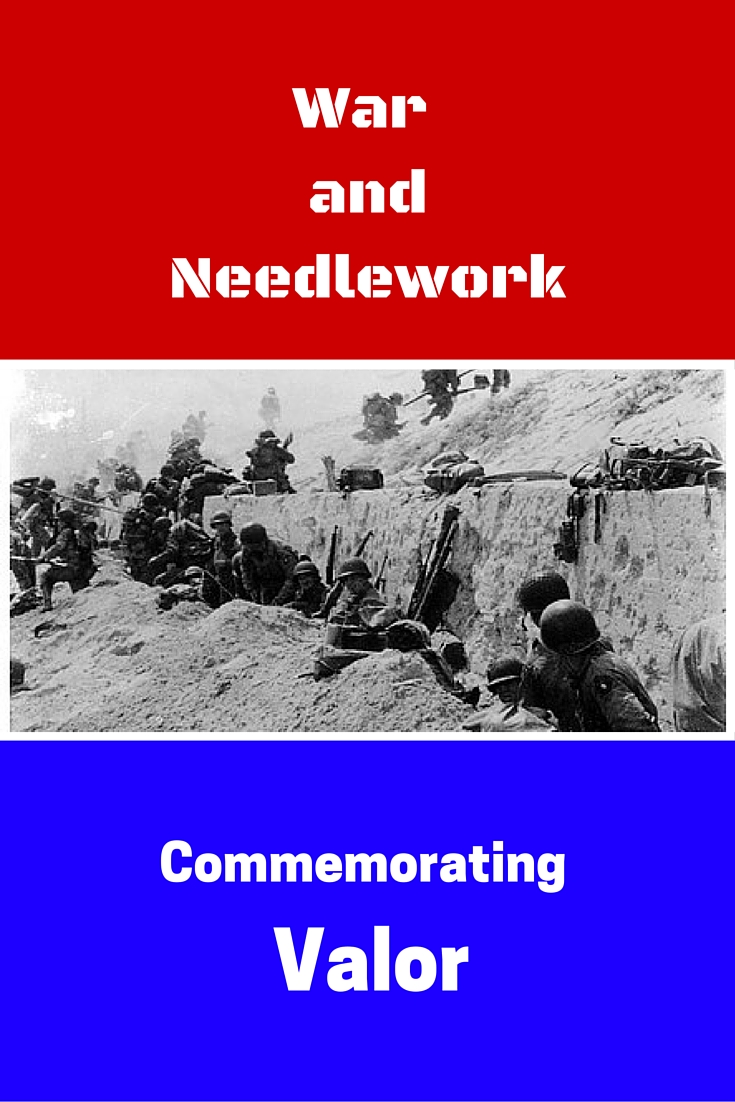



My shop is temporarily closed .
I invite you to take a few minutes to explore the blog.
Try a free pattern!

Imagine fighting for your life in a muddy 8 to 10-foot-deep trench. Rats the size of kittens are running around you. Lice are all over your body. You fear you will succumb to trench mouth, trench foot (fungal infections) or lose your feet to frost bite in the winter. Grenades are blowing up around you. Fire from machine guns and flame throwers are bombarding you, not to mention that you have to keep a gas mask at the ready to protect you from poison gas attacks.
This was life in the trenches along the European Western Front in World War I (1914-1918). How did soldiers keep fighting in these horrible conditions? They kept in touch with loved ones back home by sending special embroidered silk postcards. In this post, I will tell you more about them and show you some examples that have survived the past 100 years.

Blankets, quilts, socks, uniforms, flags - all are items sewn for warriors throughout the centuries. Whether made by hand or machine, many relatives (usually women) have stitched items for their loved one to take with them into battle. In addition to making necessities for war, needlework has also been used to tell stories about war. One of the most famous uses of needlework to tell a story of war is the Bayeux Tapestry. Consisting of eight sections of embroidery, the tapestry tells the story of how William of Normandy conquered England at the Battle of Hastings in 1066.
